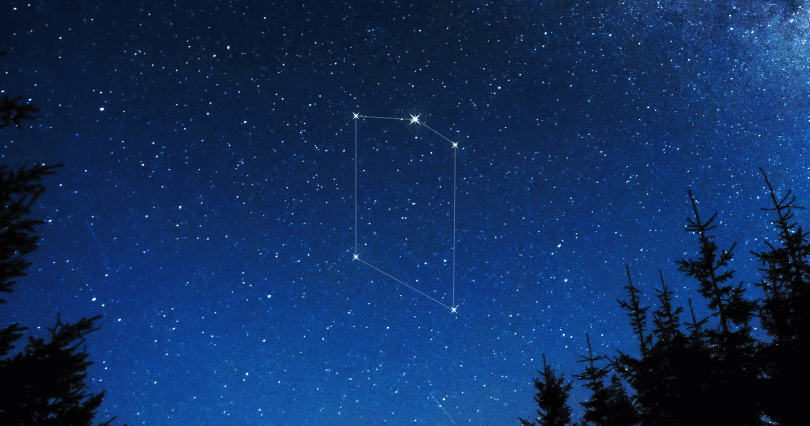Microscopium Constellation

Microscopium is a fainted constellation in the southern hemisphere, best visible around summertime. It contains the stars of the 4th and 5th magnitude and is visible to the naked eye. The most interesting star of this constellation is AU Microscopium – a red dwarf that changes its brightness frequently and is one of the oldest ones in the sky (approx. 12 million years). The neighborhood constellations are Piscis Austrinus, Capricornus, Sagittarius, and Grus. Microscopium is located right between Piscis Austrinus and Sagittarius. The constellation was first cataloged by famous French astronomer Nicolas de Lacaille around the 18th century, when he named several not known by then constellations in the southern hemisphere. Due to its recent discovery, the constellation is not named after the animal of creature from Greek-Roman mythology and was named after one of the technological novelties. Therefore, is this one linked to the invention of the microscope, and could not be that easily spotted from the northern hemisphere. Microscopium is not part of the 88 modern constellations list and recognized by International Astronomical Union.
How to spot Microscopium constellation?
Microscopium is 66th constellation is the size and it lies in the fourth quadrant of the southern hemisphere. You can see it best at latitudes between +45° and -90°. The constellation is bordered by Capricornus, Grus, Indus, Piscis Austrinus, Telescopium, and Sagittarius. This is a fainted constellation, so the best way to look for it is with binoculars in ideal observing conditions – when the night sky is bright and clear around summer times.
Microscopium is part of the Lacaille family of constellations, along with Caelum, Circinus, Fornax, Horologium, Mensa, Norma, Octans, Picto, Reticulum, Sculptor, and Telescopium constellations.
Major stars in Microscopium constellation
This constellation contains only one star with known planets. It doesn’t contain any notable deep sky objects and has no connection with any meteor showers. The brightest star in Microscopium is Gamma Microscoppi with 5th magnitude. List of major stars in Microscopium constellation:
-
γ Microscopii (Gamma Microscopii) – this is the brightest star in Microscropium constellation and is 229 light years distant from our planet. This is a giant yellow star with magnitude od 4.68. It is said to be 64 more luminous than the actuall Sun.
-
ε Microscopii (Epsilon Microscopii)
-
θ Microscopii (Theta Microscopii)
-
α Microscopii (Alpha Microscopii)
-
Lacaille 8760 (AX Microscopii) – this star is actually the one nearest to the Sun (12.87 light years distant from it). This is a 6 th magnitude star so it is now possible to see it good without binoculars.
-
AU Microscopii
-
BO Microscopii
-
WASP-7 (HD 197286)
Mythology of the Microscopium constellation
This constellation is not linked to any tail from Greek-Roman mythology and was not included in the then-known list of 48 constellations by the famous astronomer Ptolemy. The reason for that lies in the fact that most of the southern sky constellations were not visible to the Greeks at that time. French astronomer Nicolas de Lacaille was the one who first spotted and cataloged the Microscopium constellation. He didn’t want to name it after the animal or creature from mythology, and he named it after the microscope that had been then invented. The constellation was part of his created southern constellations list, and described as ‘a tube above a square box.’ Eugene Delporte, a famous Belgian astronomer set the official boundaries of this constellation in 1930. that is known and recognized today by the IAU.
Choose your package
-
Lifetime Entry in Star Catalog
-
Guaranteed visible from your location
-
Star Finder app access


-
Free & express shipping available
-
PDF Emailed in Seconds
-
Everything from a Standard Star package
-
Choose a Star Constellation
-
Easier to find in the Sky




-
Free & express shipping available
-
PDF Emailed in Seconds
-
Everything from a Standard Star package
-
Name Two Stars together
-
Extra bright and Unique 2-Star Pair






-
Free & express shipping available
-
PDF Emailed in Seconds



